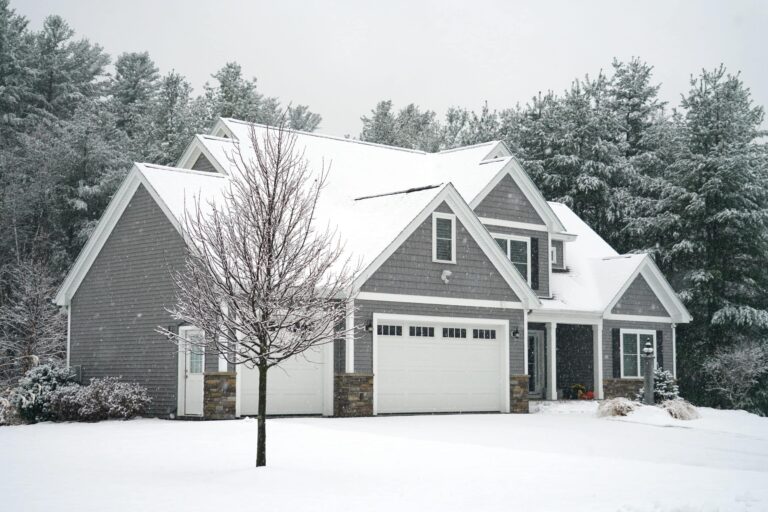Cold weather usually brings dry air at home because cold air retains less moisture than warm air. How dry (or moist) an indoor space feels depends on the relative humidity, which measures how much water vapor is in the air.
When a cold front approaches, relative humidity can drop dramatically and rapidly, and whatever happens outdoors also affects your indoor living space. Most people will feel the effects of dry air on their skin and respiratory tract when the relative humidity drops below 30%. The United States Environmental Protection Agency (EPA) recommends 30-50% relative indoor humidity for homes to counteract the negative health effects.
The weather isn’t the only cause of dry air at home. Other factors affecting indoor relative humidity include:
Poor quality or worn-out insulation, which is less effective at controlling indoor moisture levels and temperature.
Overusing dehumidifiers, which can result in extracting too much moisture from the air.
To determine whether your home’s relative humidity is within the recommended range, take a glass of water and fill it with a few ice cubes. If after 5 minutes you have condensation dripping on the outside of the glass in large amounts, the humidity level is too high. If no condensation forms at all, then your humidity level is too low. For a more accurate reading, you can also purchase a digital or analog hygrometer for a few dollars.
Read below to learn more about the effects of dry indoor air and how to combat dry air in winter.
Problems Caused by Dry Air at Home
Health Effects
Dry indoor air can lead to a range of uncomfortable health issues, such as:
• Dry skin
• Dry throat
• Dry cough
• Chapped lips
• Nose bleeds
• Sinusitis
For most people, the health effects of dry indoor air are minor. However, for people with chronic health conditions, such as asthma or chronic obstructive pulmonary disease (COPD), it’s crucial to ensure optimal indoor humidity levels. Although not strictly health-related, dry air can also reduce your sleep quality by drying out your soft palate and triggering snoring. Plus, you might wake up more frequently in the night wanting a glass of water.
Home Damage
Inadequate indoor humidity changes your home in a multitude of ways. Most homeowners know that persistent high humidity triggers mold and mildew growth, rots furniture, and can damage structural beams or brickwork. However, dry indoor air is equally troublesome and shouldn’t be ignored. The effects of low humidity on homes include:
• Chipping paint
• Warping wood and hardwood floors because of contraction
• Peeling/flaking wallpaper or plaster
• Cracked furniture or instruments
• Shrunken door and window frames
How to Raise Your Home’s Humidity in Winter
Fixing dry indoor air is easy. All you need to do is introduce more moisture into your home! There are several low-cost ways to do this, such as:
Houseplants increase indoor humidity through evapotranspiration. Plants with large leaves introduce moisture into the air fastest. So, for a small bedroom, all you need are two medium-sized plants. Popular houseplants for humidifying indoor spaces include spider plants, palms, English ivy, and ferns.
Bowls of water cost you nothing and introduce moisture into the air through evaporation. The process is slower than a dedicated humidifier, but you can speed it up by adding multiple bowls in a room. Use bowls with a large surface area to increase the rate of evaporation.
Hot showers with a cracked open door effectively increase the air’s moisture content.
Boiling water on the stove and letting the steam waft around your house instead of sucking it away through your extractor fan increases humidity.
Damp sponges or cloths left out to dry will help add moisture to the air.
Staying hydrated will reduce the uncomfortable feeling of dryness in your mouth and throat, as well as on your lips and skin.
A more permanent method is to use an electric humidifier, which is a go-to solution for improving indoor air quality for many homeowners. There are freestanding humidifier units (aka power humidifiers), as well as whole-home humidifiers (aka bypass humidifiers). Whole-home units use your HVAC system’s airflow to distribute moisture around your home. Once installed, you can set the exact humidity levels via a control panel.
Additional benefits of whole-home humidifiers include:
• Lower running costs, compared to freestanding units.
Water needs changing only once or twice per season, whereas freestanding ones require daily changes.
• Built-in hygrometers automatically adjust humidity levels for you.
Maintenance is minimal, and annual cleaning can be done simultaneously with your HVAC system.
If you want to see your options for whole-home humidifiers or want further advice on how to improve your home’s indoor air quality, you can call us at [theme_company_telephone]


